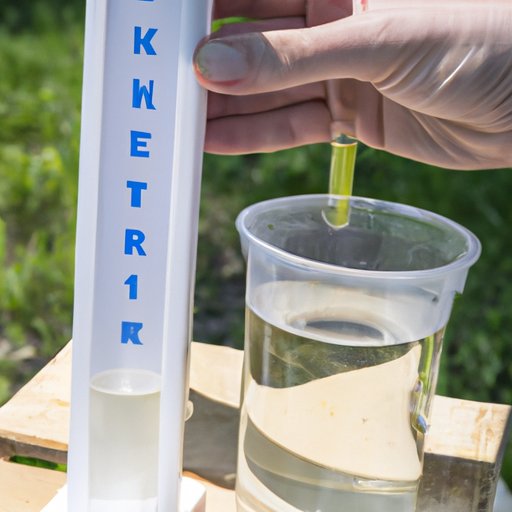Introduction
Well water is water from a hole that has been dug or drilled in the ground to access underground aquifers. It is usually found in rural areas where there is no access to a municipal water supply. Well water can contain contaminants and minerals that give it a bad taste or smell. In this article, we will discuss how to make well water smell better by testing for contaminants, installing systems, and maintaining them.

Test Your Well Water for Contaminants
Before you can make your well water smell better, you need to know what is causing the odor. Common contaminants that can cause foul smells in well water include sulfur, iron, and manganese. You can have your well water tested for these contaminants by a certified laboratory. The results of the test will tell you what needs to be done to improve the smell and taste of your well water.
Install an Aeration System
An aeration system is a good way to make well water smell better. An aeration system works by introducing air into the water, which helps break down organic matter and reduce odors. The air also helps to reduce the amount of iron and manganese in the water. When installing an aeration system, it is important to make sure that it is installed correctly and that all of the parts are working properly. This will ensure that your well water is free of odors and tastes clean.

Use Chlorine or Hydrogen Peroxide
Chlorine and hydrogen peroxide are both effective ways to make well water smell better. Chlorine is a powerful disinfectant that can help kill bacteria and other microorganisms that may be causing the smell. However, chlorine can also be harmful if used improperly. Hydrogen peroxide is a milder alternative to chlorine but is still effective at killing bacteria and reducing odors. When using either of these chemicals, it is important to follow the directions on the label and to use protective gear such as gloves and eyewear.
Add Carbon Filters or Reverse Osmosis Filters
Carbon filters and reverse osmosis filters are both effective ways to make well water smell better. Carbon filters work by trapping impurities in the water and removing them from the water. Reverse osmosis filters use a semi-permeable membrane to remove impurities from the water. Both of these types of filters can help reduce odors in well water. When installing either type of filter, it is important to make sure that they are installed correctly and that all of the parts are working properly.
Use Bacteria-Eliminating Tablets or Powders
Bacteria-eliminating tablets and powders are another way to make well water smell better. These products contain chlorine or other disinfectants that can help kill bacteria and other microorganisms that may be causing the odor. When using these products, it is important to follow the directions on the label and to use protective gear such as gloves and eyewear.
Install a UV Purifier
A UV purifier is a device that uses ultraviolet light to kill bacteria and other microorganisms that may be causing the odor. A UV purifier is easy to install and requires little maintenance. When installing a UV purifier, it is important to make sure that it is installed correctly and that all of the parts are working properly.
Utilize Activated Charcoal Filters
Activated charcoal filters are another way to make well water smell better. Activated charcoal filters trap impurities in the water and remove them from the water. When installing an activated charcoal filter, it is important to make sure that it is installed correctly and that all of the parts are working properly.
Conclusion
Making well water smell better can be achieved by testing for contaminants, installing an aeration system, using chlorine or hydrogen peroxide, adding carbon filters or reverse osmosis filters, using bacteria-eliminating tablets or powders, installing a UV purifier, and utilizing activated charcoal filters. All of these systems should be installed correctly and maintained regularly to ensure that they are working properly. By following these steps, you can make sure that your well water is free of odors and tastes clean.
(Note: Is this article not meeting your expectations? Do you have knowledge or insights to share? Unlock new opportunities and expand your reach by joining our authors team. Click Registration to join us and share your expertise with our readers.)
